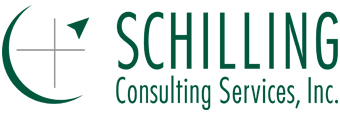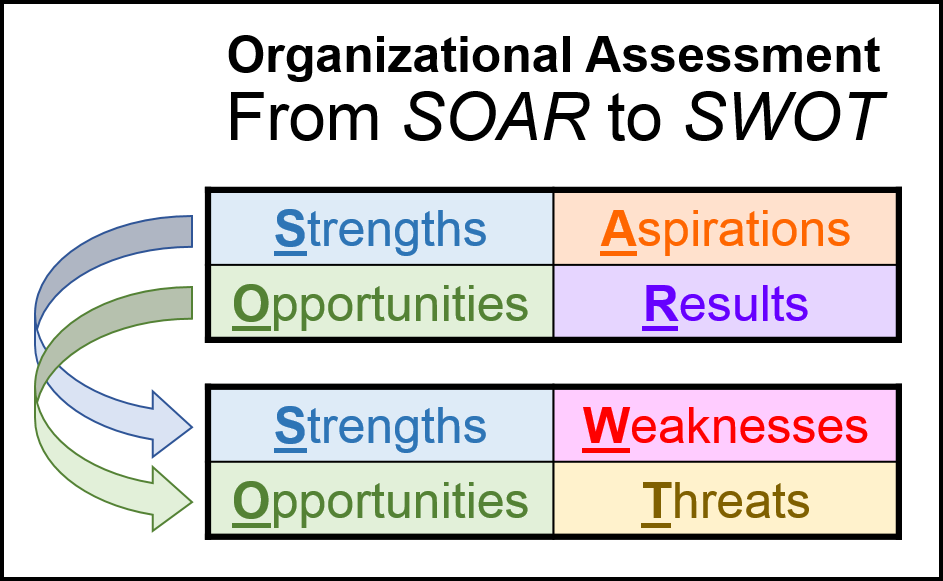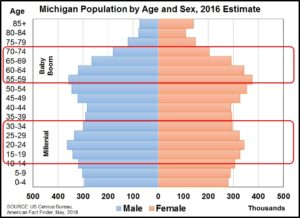Critical Work in Chaotic Times
When major unanticipated events occur, they often force us to re-prioritize, if only for the time being. For example, within the broad subject areas of data analysis, planning, and organizational performance, there may be some activities that are postponed until things become less chaotic. However, unforeseen events may also heighten the importance of other activities, even within those same three broad subject areas mentioned above. Here are some examples of the kinds of analysis, planning, and organizational performance work that may be more important than ever for your team or in your organization during, and immediately after, an unforeseen event.
- Customer Feedback: How well did your team or organization meet the needs of your customers (external or internal) during the event? Have the improvising and innovation that often come with unforeseen events changed your customers’ expectations? It may be more important than ever to listen to the Voice of the Customer through surveys, interviews (phone), or focus groups (virtual).
- Organizational Dashboard Development: The improvising and innovation associated with unforeseen events often leads to process changes and new and different outcomes. It may be time to re-assess your organization’s Balanced Score Card or Dashboard(s). Are different targets warranted? Are there new metrics that should be added?
- Research and Benchmarking: What are the success stories relevant to your portfolio and core processes that are emerging from the unforeseen event? What can you learn from how some organizations responded quickly and successfully, and how could you adapt what you learn to your own organization or team’s work?
- Portfolio Analysis: Most organizations and teams have products and services at various stages of development and success. Understanding the composition of this “portfolio” before the unforeseen event, and projecting how it might look afterward, helps with assessing the true impact of the event and also with planning for organizational change that may be required afterward.
- Business Plans and Feasibility Studies: The changes brought about by an unforeseen event, both external to the organization as well as internal, sometimes are the inspiration for a major change in a core process or even a new service or product idea. This is the best time to prepare a Business Plan, or at least develop the idea further with a more expeditious and less resource-intensive Feasibility Study.
- Innovation: A common thread through many of these disciplines is the innovation that comes in response to an unforeseen event. The change in circumstances requires a fundamental shift in thinking and a different way of meeting rapidly evolving needs. What is your organization or team’s level of innovation capability? As it increases, you not only elevate your competitive advantage, but also your ability to respond optimally when the next unforeseen event occurs.
- Change Readiness Assessments & Change Management: Responding to an unforeseen event, and adjusting to the new norm that often follows, require change in your organization. Some organizations and teams handle change better than others, partly because they are more prepared, having learned and practiced the concepts and tools related to change management. Taking stock of your change management competency, and enhancing it with education and practice if warranted, will better position you for the next major unforeseen event.
If any of this work seems timely in your organization, you are not alone. And, if you are short on people power to get any of this done due to re-prioritization or temporary staff reductions, I can help, and at a manageable cost. Contact me at your convenience...and stay well.
Jeff

 Tapping the Power of Two: The two techniques can be, and often are, used separately. Many use SWOT Analysis alone to dissect a problem or challenge. SOAR Analysis can be an effective way to establish an Aim Statement or new Team Charter. However, because the essence of planning is clarifying both the current and future state, they can be used as two parts of the same planning process. And, when this is done, some additional efficiencies are gained. Having addressing the Strengths and Opportunities as part of a SOAR analysis in the vision / goals development, they can be simply imported into a SWOT Analysis, meaning almost half the work of the SWOT Analysis is already complete. And for the participants, the shared content of Strengths and Opportunities creates a logical, mental connection between current and future state.
Tapping the Power of Two: The two techniques can be, and often are, used separately. Many use SWOT Analysis alone to dissect a problem or challenge. SOAR Analysis can be an effective way to establish an Aim Statement or new Team Charter. However, because the essence of planning is clarifying both the current and future state, they can be used as two parts of the same planning process. And, when this is done, some additional efficiencies are gained. Having addressing the Strengths and Opportunities as part of a SOAR analysis in the vision / goals development, they can be simply imported into a SWOT Analysis, meaning almost half the work of the SWOT Analysis is already complete. And for the participants, the shared content of Strengths and Opportunities creates a logical, mental connection between current and future state.